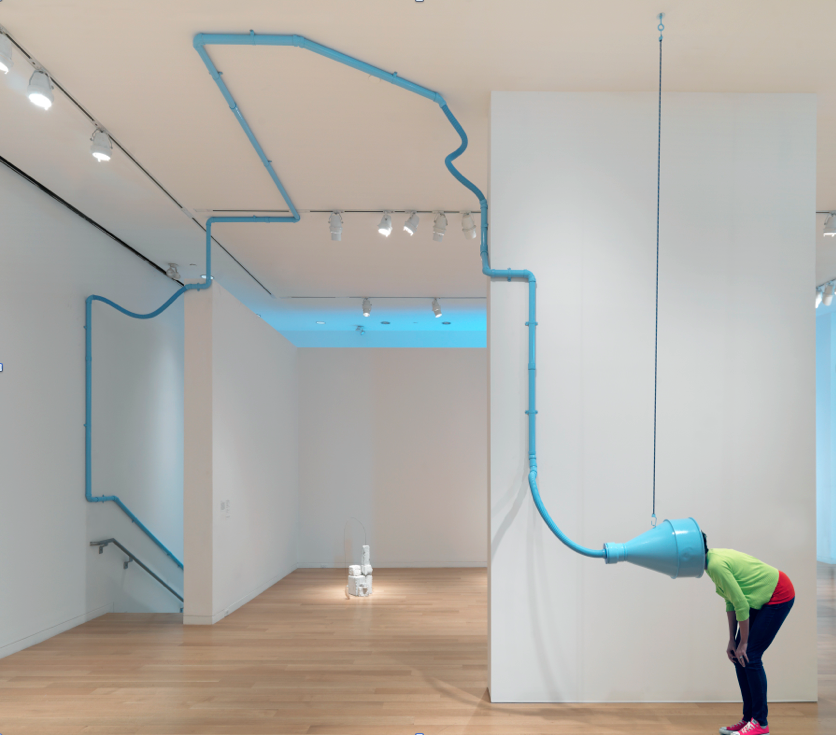Julianne Swartz: SMoCA
by Sarah Hamilton
Viewing artwork in a gallery or museum is a two-part pleasure. The first part is the pleasure you take from viewing the artwork – seeing it up close, perhaps walking around and leaning in to it. The second part is watching others in the gallery move around the same works and seeing the satisfaction that emerges from that experience. Viewing art can never be quite a shared mass experience, but watching others enjoy a piece brings art viewing closer to it.
Julianne Swartz’ How Deep is Your at the Scottsdale Museum of Contemporary Art is full of these experiences. This is the first major survey of Swartz’s work, and while it reveals some of the deeper and more pervasive themes in her work over the past 11 years, it also shows a deep regard for the museum-going experience.

Upon first entering the museum, faint strains of the Bee Gees’ “How Deep is Your Love” are faintly heard, as if someone’s iPod is on too loud. The music fades out again until you enter the exhibition gallery. There, vacuum tubes wind their way around the perimeter of the room resonating fragments from the Bee Gees, as well as John Lennon’s “Love”. Not until halfway through the exhibition is there a horn for you to properly stick your head in and listen to the work, revealing the fragmentary nature of the installation itself – in no one place can you hear a clear broadcast of the songs, and instead, you have to let the songs worm their way through your mind as you explore the rest of the exhibition.
At the entrance of the gallery are some of Swartz’s smaller works, which belie the tone of the exhibition and Swartz’s enduring interest in simple mechanisms like magnets and simple mechanics. Here, works like Lean, a curved rod delicately balanced against the wall, and Stability Study (Table), a table supporting a stone that in turn supports a metal rod that levitates from a perpendicular mast, invite viewers to look more closely, and to contemplate Swartz’s craftsmanship.

Similarly, in Spectrum, an assembly of seven wires, thread, and magnets, form a balancing sculpture, arranged in a minimalist rainbow spectrum. Demonstrating Swartz’s concern for the formal aesthetics of her work, the piece also negotiates her ability to dominate a gallery space while still maintaining her delicate and curious style.
Her work Loop is central to the exhibition, but is also the only work to have a separate room (Swartz’s line drawings are also technically in separate compartments, but are only viewable through windows in the main gallery). Loop resembles an old multicolor fishing net, peppered with small speakers that make up the eight-channel sound piece. Birds chirp, children laugh, water trickles, and a woman hums a faint tune. Similar to the installation of How Deep is Your, Loop relies on curiosity and patience to work its way into the viewer’s imagination. Perhaps this is the nuance revealed in Swartz’s work: a momentary pleasure in the first moments of recognition, an exploration of the craftsmanship and materials, and above all an enduring curiosity and thoughtfulness in the work – long after leaving the gallery.
Julianne Swartz’s How Deep is Your is open at the Scottsdale Museum of Contemporary Art until January 26. It opens at the Indiana Museum of Art in Indianapolis in March.